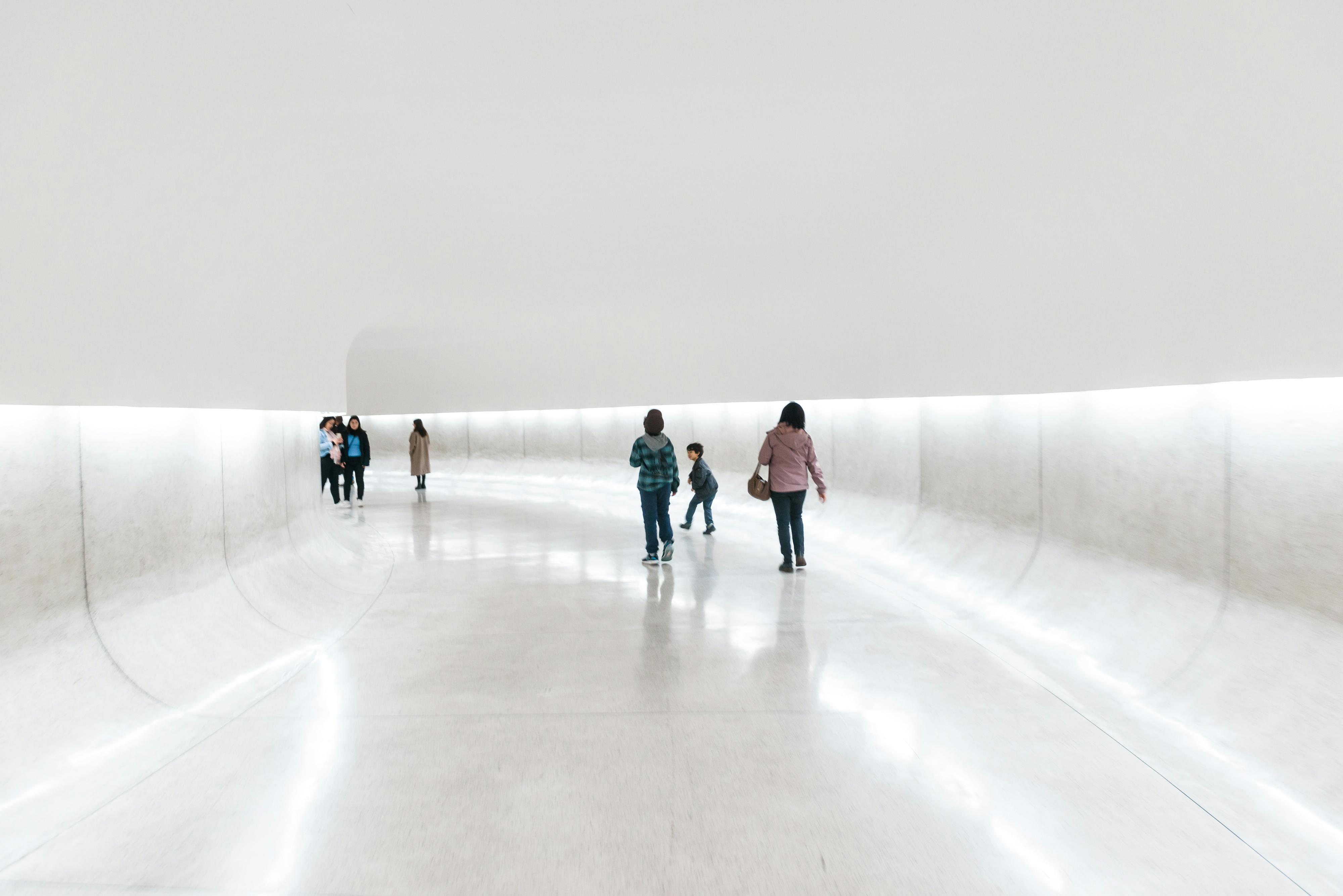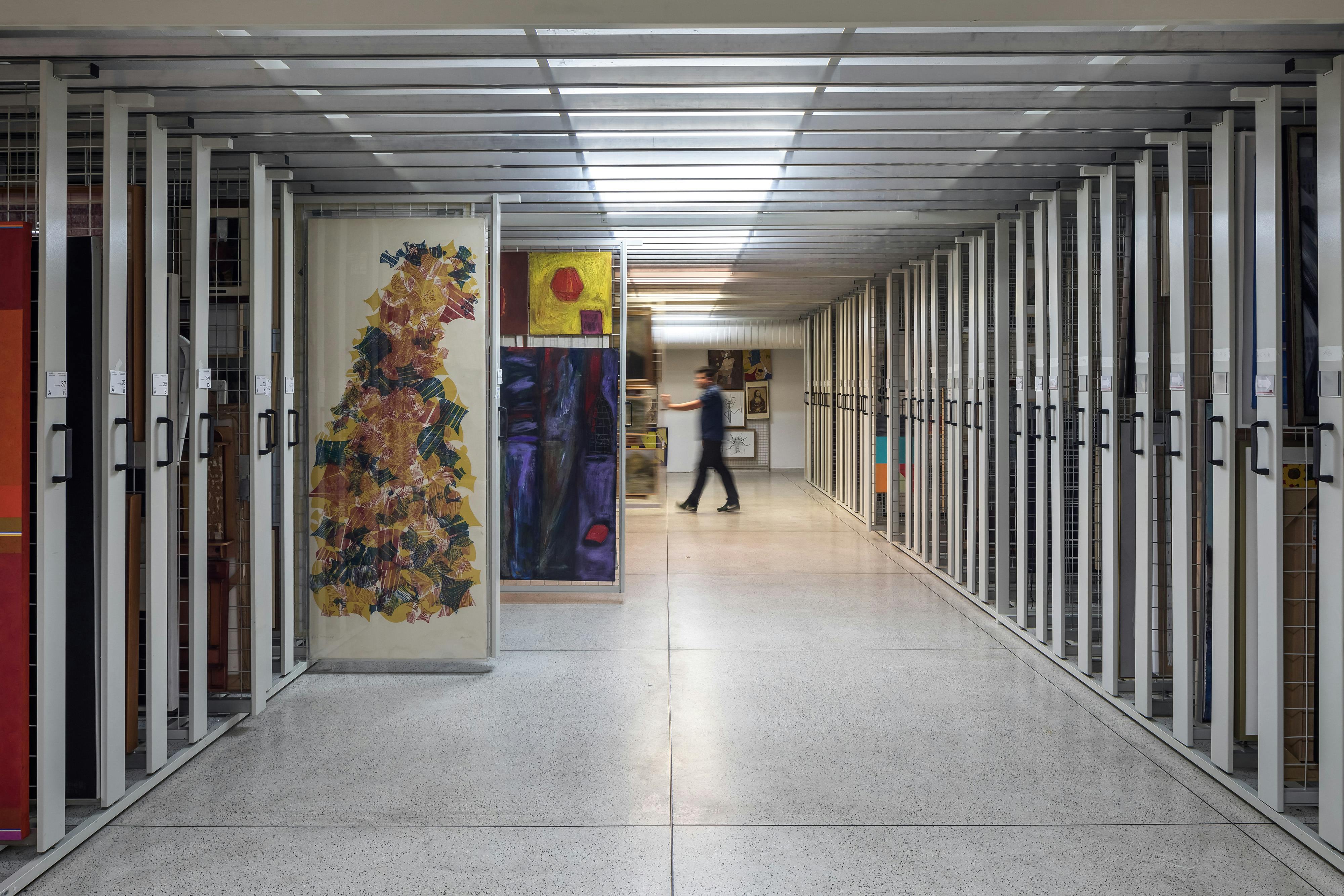
Conservation and Restoration Laboratory
Museology
Area responsible for organizing the temporary exhibitions that take place at the Museum and for curating all exhibitions with works from the collection, whether held internally or traveling to other institutions.
A curator's work involves choosing the artist(s) and the theme of the exhibition, directing the production, planning the exhibition space, setting the light, humidity and temperature, the number of works to be displayed, the presentation of the works and many others aspects.
The Museology staff includes a historian, who researches and gathers information about an exhibition: the works, the artist, other exhibitions already held. This information is registered in a special system. They are part of the memory of each exhibition, which also contains the documents of the bureaucratic and technical process, promotion materials, etc.
Part of this information is available for consultation at the Centro de Documentação e Pesquisa (Documentation and Research Center).
Collection Storage
This area houses the heart of the Museum: its collection. At MON, there are more than 14,000 works by important artists from the national and international scene, which come in part from the Museu de Arte do Paraná – MAP, from the Banestado collection, and from the Bozano collection, or that were donated and acquired.
The works can be seen by the public in exhibitions of the collection, held inside the MON or in other museums. And whenever a work leaves the storage, even for a local exhibition, it is necessary to follow a strict security protocol that involves, among other processes, the exit authorization and a technical report with the conservation conditions of the work.
In terms of transport, the works are handled by specialized art handlers, in teams made up of MON personnel and outsourced employees. They are professionals trained for this function, who wear masks and gloves so as not to damage any piece.
The diligence with transport processes is equally rigid when MON hosts exhibitions from other museums. The works come on special carriers, in coated and climate-controlled compartments. The vehicles that carry out this service are often accompanied by guard escorts and have radar and satellite communication systems.
It is due to the efficiency in security and transport of works that MON is prepared to receive exhibitions from all over the world, providing visitors with the opportunity to admire some of the most representative works of great artists.
Laboratory
This area is responsible for the cleaning, conservation, restoration and packaging of the Museum's artworks, both in the collection and in the temporary and permanent exhibitions. For this, the Laboratory has modern equipment, which makes MON a reference regarding artworks on paper, painting and sculpture.
It is the Laboratory that defines the conditions under which the pieces will be displayed, in order to guarantee their safety and conservation. Some works, for example, cannot be touched, because even clean hands can be greasy. When we touch a piece, grease accumulates on its surface, attracts dirt and can cause fungus. If it is not resistant, it may deteriorate.
Equipment such as a thermo-hygrograph and a thermo-hygrometer make it possible to check and control the humidity and temperature of the collection or exhibition environment. A very sudden variation in these two elements can cause great damage to the artworks.
Lighting must also be controlled. Ultraviolet filters are placed on lamps and glass frames to prevent premature aging of the works made with organic materials, such as paper, canvas or wood.
Another important piece of equipment in the Laboratory is the microscope. It allows us to identify if the work has any fungus, if it is cracked (with cracks) and the depth of the crack.
If an artwork is damaged, it needs to be restored. This process involves several techniques, which depend on the type and extent of the damage.
In the step-by-step below you can understand how the restoration of an oil painting on canvas works.
Steps of the restoration process
The first step in the restoration process is to carry out a visual examination of the work. A visual analysis is made of the front and back of the work, to identify its state of conservation. Its color is examined, possible dirt, tears, cracking and the condition of the painting.
After this first analysis, the painting is fixed using various procedures, both temporary and permanent, so that the work is not damaged during the restoration.
After fixing, comes the step of protecting the paint layer with acrylic resin so as not to suffer damage during the process of removing the frame and chassis.
For every type of work there is a different restoration procedure, such as:

